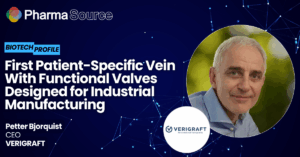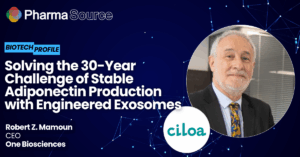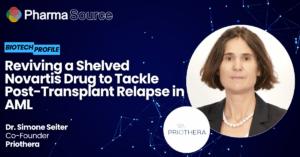Swedish biotech Alligator Bioscience outlines how strategic antibody engineering and focused execution positioned mitazalimab for pivotal trials in metastatic pancreatic cancer, transforming from university research into a Phase 3-ready immunotherapy program.
Founded in 2001 and headquartered in Lund, Sweden, Alligator Bioscience has evolved from academic research at Lund University into a clinical-stage company specializing in tumor-directed antibody-based immunotherapies. After undergoing “a couple of iterations” to arrive at their current focus on antibody engineering and immune activation in oncology around 2008, the company has positioned its lead candidate, mitazalimab, as a best-in-class CD40 agonist ready for pivotal Phase 3 trials in previously untreated metastatic pancreatic cancer.
Targeting an Aggressive Cancer with Limited Options
Alligator’s approach addresses one of oncology’s most challenging therapeutic areas. CEO Søren Bregenholt emphasizes the scale of unmet need: pancreatic cancer maintains a five-year survival rate under 5% with very limited therapeutic options, primarily chemotherapy. The company’s strategy centers on immune activation rather than direct cytotoxicity.
“To address this significant unmet need, we are developing mitazalimab to induce immune activation in the tumor microenvironment, thus augmenting the efficacy of chemotherapy, without adding significant toxicity in this frail patient population,” Bregenholt explains. The goal extends beyond incremental improvement to meaningful clinical impact: improving long-term survival and offering a new option where current therapies fall short.
Differentiated CD40 Agonism Through Antibody Engineering
The company’s scientific approach distinguishes itself through targeted CD40 agonism combined with proprietary antibody engineering. CD40 serves as a key regulator of antigen-presenting cells, and activating CD40 on these cells drives tumor-specific T cell response. However, Alligator’s differentiation lies in the engineering precision applied to optimize the therapeutic profile.
“Mitazalimab was designed with a favorable efficacy-safety profile in mind, making it highly suitable for combination with harsh chemotherapy regimens, such as mFOLFIRINOX, for sustained periods,” Bregenholt notes. “What sets us apart is our ability to fine-tune the drug profile through our patented antibody engineering technologies—achieving potency and selectivity while ensuring manufacturability and clinical scalability.”
This engineering approach directly addresses the challenge of combining immunotherapy with intensive chemotherapy regimens in a vulnerable patient population, requiring careful balance between efficacy and tolerability.
Strategic Clinical Execution and Protocol Adaptation
Alligator’s clinical development demonstrates the importance of maintaining control while remaining responsive to emerging data. The company’s Phase 2 OPTIMIZE-1 study required strategic protocol modifications based on clinical signals, illustrating the value of integrated internal capabilities.
“With mitazalimab we early on amended the Phase 2 protocol as we started to see sustained clinical benefits and wanted the option to continue to treat patients beyond the original period,” Bregenholt explains. “Secondly, we changed the protocol to enroll an additional arm in the study following FDA advice.”
The company emphasizes that executing such strategic pivots requires “well integrated internal and external resources” and highlights the importance of maintaining internal medical, clinical operations, and regulatory capabilities to “stay in control of your trials, and to be able to respond to the clinical data as it materializes.”
Manufacturing Strategy: Outsourced but Controlled
CMC Approach for Antibody Scale-Up
Alligator operates an entirely outsourced manufacturing model while maintaining strategic oversight of critical quality parameters. For mitazalimab, the company partners with a CDMO selected specifically for its track record in scaling antibody manufacturing from early clinical stages through commercial launch.
“The selection process emphasized GMP compliance, regulatory alignment, and scalability,” Bregenholt explains. “This approach allows us to remain agile while ensuring that our manufacturing partner can support late-stage trial supply and commercial launch.”
The company’s manufacturing philosophy begins with molecular design. “We always design and select our lead candidates to ensure the best possible manufacturability,” Bregenholt notes. However, scaling challenges remain inherent to antibody development.
“Maintaining the right balance between yield, product quality and batch-to-batch consistency is crucial in any manufacturing scale-up,” he emphasizes. “Understanding the relationship between key quality parameters and your molecules’ mechanism of action and clinical performance is key to success in this exercise.”
Cost management represents another critical consideration. “You want to keep an eye on both development and total cost of goods, as CMC constitutes a significant part of the total development cost for antibodies,” Bregenholt observes. Success requires “a close and constructive dialogue with your CDMO to keep timelines, budget and quality.”
Funding Strategy and Phase 3 Positioning
With approximately SEK 1.2 billion raised through equity financing, non-dilutive grants, and partnership funding, Alligator has maintained financial flexibility while progressing through clinical development. The company completed a SEK 153 million rights issue in early 2025, providing capital for Phase 3 preparation and pipeline advancement.
The company’s current strategic priority centers on partnering for registrational development. “We are currently discussing with several potential global and regional partners to enable and accelerate the registrational development of mitazalimab,” Bregenholt states. This partnering effort supports “critical, Phase 3 preparational operational workstreams” and positions Alligator “as a focused, execution-driven partner for late-stage immuno-oncology development.”
Ecosystem Advantages and Operational Lessons
Operating within the Medicon Valley ecosystem has provided Alligator access to specialized expertise in immunology and oncology. The company has leveraged collaborations with academic institutions, CROs, and international investigators to strengthen trial design, biomarker strategies, and translational research.
Key operational lessons center on cross-functional integration and vendor management. “One of the biggest lessons has been the value of cross-functional alignment early in the development process,” Bregenholt reflects. “Ensuring that clinical, regulatory, CMC, and commercial strategies are integrated from the outset helps avoid costly missteps.”
The importance of maintaining high-quality external partnerships extends throughout the development process. “We’ve also learned the importance of focusing on high-quality data and engaging closely with trial sites and clinical investigators to build long-term clinical credibility,” he adds.
Strategic Advice for Scaling Biotechs
Bregenholt’s guidance for fellow biotech founders emphasizes strategic focus, team building, and partnership management. “Focus your resources on the programs with the strongest therapeutic rationale and market potential—but try to build optionality into your program or pipeline,” he advises.
The critical importance of vendor selection and management in the outsourced biotech model cannot be overstated. “In a highly outsourced industry, biotech, rigorous vendor selection and management is crucial for success. Hence, choose partners carefully, maintain transparency and stay engaged and in control of outsourced activities, progress and data.”
Team building should align with strategic objectives while maintaining core values. “Build your team to support your strategic objectives and in accordance with your corporate values, ensuring that you have access to critical competences in an innovative and accountable environment,” he emphasizes.
“Whether private or listed, think proactively about investor communication, transparency, and how each development milestone shapes long-term investor confidence,” Bregenholt concluded.







